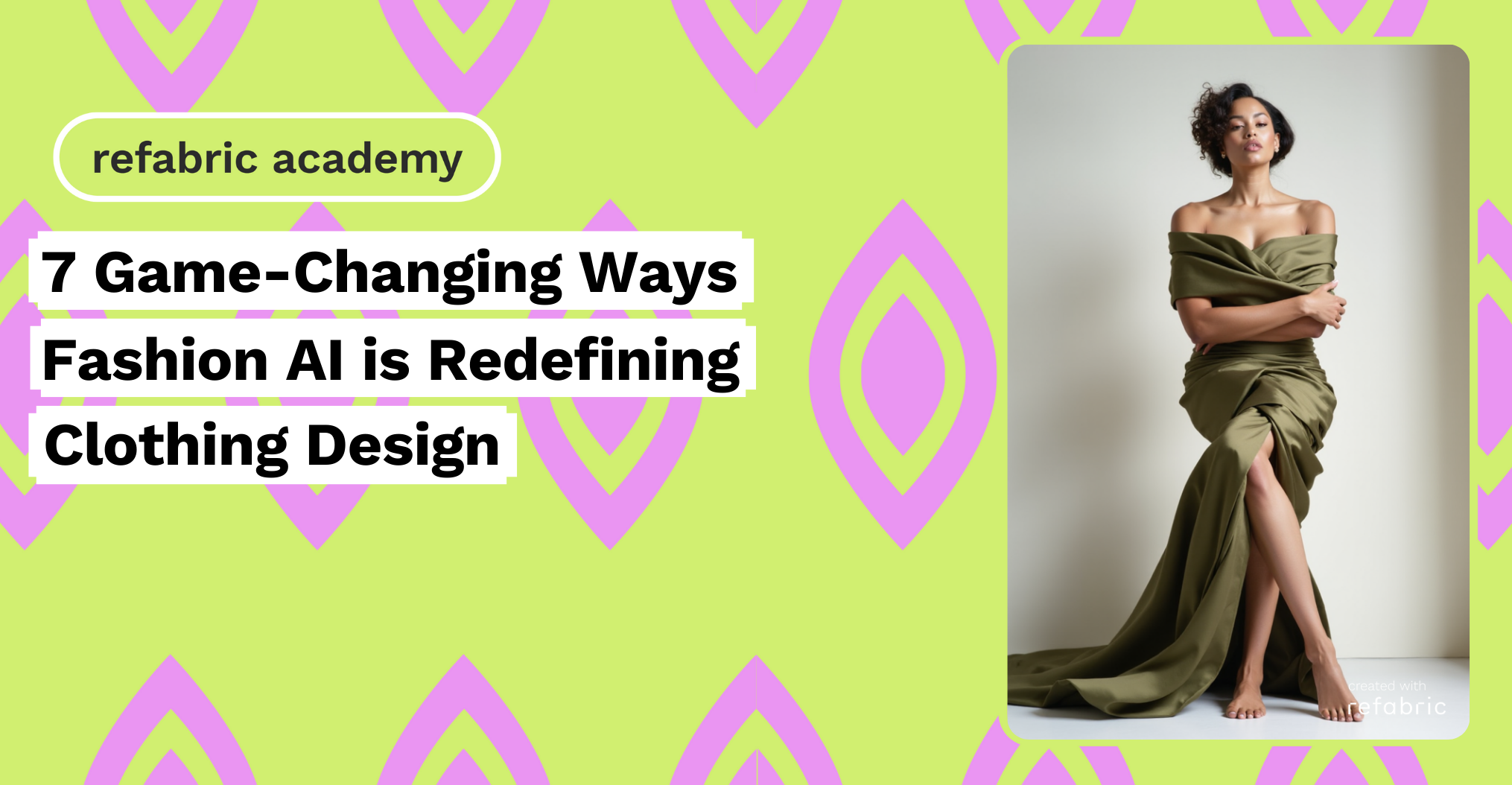Leading a powerful transformation across the industry, fashion AI is reshaping how clothing is conceptualized, created, and brought to market. By streamlining design processes through intelligent automation, predictive analytics, and virtual simulation, fashion AI is making fashion faster, smarter, and more sustainable. Below, we explore seven groundbreaking ways this technology is reinventing clothing design.
1. Predictive Trend Forecasting
Fashion AI excels at detecting and forecasting style trends by analyzing massive datasets from social media, fashion blogs, retail platforms, and global market behavior. Instead of relying solely on intuition or seasonal runway cues, designers now use AI to anticipate what consumers will want next. This predictive power allows brands to make data-backed creative decisions, reducing guesswork and ensuring their designs stay ahead of the curve.
2. Smart Fabric and Color Recommendations
AI clothing design tools can analyze historical performance data of fabrics, color palettes, and patterns to provide intelligent suggestions during the design phase. Designers can instantly understand what combinations resonate with target markets and make more informed decisions. Whether optimizing for durability, comfort, or aesthetics, AI ensures that material choices align with current demand and future trends.
3. Virtual Prototyping and 3D Simulation
Traditionally, fashion design involved creating multiple physical samples, an expensive and time-consuming process. With AI-powered 3D design tools, designers can create hyper-realistic virtual garments to visualize fit, drape, and movement. This reduces reliance on physical samples, accelerates the approval process, and enables quicker go-to-market timelines.
4. Customized Sizing and Fit Solutions
One of the most revolutionary applications of fashion AI is in creating personalized fit solutions. By leveraging biometric data, customer feedback, and machine learning, brands can offer custom sizing at scale. This not only enhances customer satisfaction but also reduces returns and waste—two persistent challenges in fashion retail.
5. Real-Time Collaboration and Co-Creation
Fashion AI enables collaborative design across borders through cloud-based platforms. Designers, developers, and product managers can work simultaneously on garments, with AI providing real-time feedback and iterations. Refabric, for instance, offers cutting-edge AI design tools that empower creators to prototype collections, visualize textiles, and simulate photo-realistic try-ons—all within a single platform. Their tools are designed to amplify creativity while streamlining production, making fashion design more accessible and efficient than ever before.
6. Sustainable Design Through Waste Reduction
Sustainability is no longer optional, and fashion AI is a key ally in reducing waste and resource consumption. AI tools help brands optimize cutting patterns, forecast inventory needs, and eliminate unnecessary production. By minimizing fabric waste and avoiding overproduction, fashion AI aligns with the industry’s shift toward circular and eco-conscious practices.
7. Automated Design Generation
AI clothing design software can generate endless iterations of garment concepts based on a brand’s aesthetic, seasonal trends, or customer preferences. These generative models allow designers to explore bold and unconventional ideas faster than ever before. What used to take days of sketching can now be produced in minutes, freeing up human talent for more strategic and creative tasks.
How Fashion AI is Reshaping the Design Landscape
As fashion AI continues to evolve, it’s becoming more than just a tool, it’s a creative partner that enhances every phase of the design process. From ideation to execution, AI is enabling designers to produce collections that are not only visually compelling but also deeply aligned with market needs and sustainability goals.
For fashion professionals and brands eager to stay competitive, the integration of AI in design is no longer futuristic, it’s foundational. Embracing these game-changing tools means faster workflows, lower costs, greater innovation, and a smarter, more connected fashion industry.
From virtual prototyping to personalized fit solutions, fashion AI is revolutionizing how clothing is designed and delivered. As platforms like Refabric continue to lead innovation in this space, the future of fashion looks more exciting, intelligent, and inclusive than ever. By embracing fashion AI today, designers and brands are setting the standard for the next era of clothing design.
